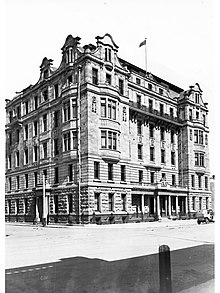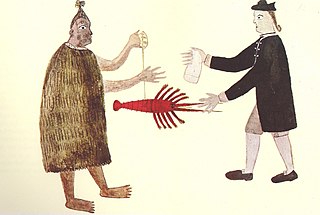History

The early settlers believed in a non-conformist tradition of self-help and opposed any State involvement in community services such as schooling where volunteerism could fill the role. They also opposed special privileges being given to the established church. [7] Soon after settlement in 1836, there were moves to set up community schools, often run by a church. They charged fees to support the teacher. One such school opened in 1847 at Mitcham, a few miles south of Adelaide, with Thomas Mugg being the teacher, a former cabinet maker. [8] Interest in State involvement in schooling had changed by 1851 when the new Legislative Council passed the Education Act 1851 which established a Board of Education. [9] The Act made provision for support for school buildings and a stipend for teachers, paving the way for universal elementary education. However, South Australia was the first state to make a clear separation between church and state in schooling. Only schools that provided non-denominational religious instruction were given support. [10]
In Britain and across Australia, the idea of State education grew rapidly during the 1860s to 1870s culminated in South Australia with the Education Act 1875 which established the Education Department more or less as it exists today. The act provided for free and compulsory education for children from 7 to 13. [11] By the turn of the century South Australia was becoming more prosperous and the need for a well educated population was becoming more evident. The idea of universal State education was a new concept for society at that time and debate continued about the nature of the education to be provided. A major issue was whether there should be a religious element in the instruction. South Australia dealt with the issue through Australia's first referendum, the 1896 South Australian referendum. The voters decisively supported the existing system, rejecting scripture classes and capitalisation support for religious schools.
1900
There was almost no teacher training and the curriculum was largely devoted to rote learning. The University of Adelaide offered to take responsibility for teacher training and the University Training College opened in 1900. Secondary education at this time was only provided through fee paying private schools. [12] In 1908, Adelaide High School opened, the first free State high school in Australia. [13]
The number of free high schools spread slowly and in 1915 only amounted to 6.2 secondary pupils per thousand people. However this grew to 73 per thousand 1969. The focus of secondary education was strongly academic, following the English grammar school tradition. [14] The Depression and World War II brought significant disruption to the education system. Teacher salaries were reduced during the Depression. The Qualifying Certificate was an important assessment at the end of primary schooling, indicating a standard of elementary literacy and numeracy. The Qualifying Certificate was abolished in 1942 indicating that this level of educational achievement was no longer relevant and high school education was the norm.
1950
During the 1950s, the school curriculum was standard across the state. In primary schools, there the same texts were used in all schools and there was little variation between schools in what was taught. By the end of the decade, the greatest problem was the very rapid growth in enrolments due to a higher birth rate, large scale immigration and high school students staying at school longer. The demand for teachers is illustrated by the opening of new Teachers Colleges: Wattle Park in 1957, Western in 1962, Bedford Park in 1966 and Salisbury in 1968. [15]
During the latter part of the 1960s, widespread social changes began to impact on the education sector both in schools and tertiary education sectors. There was a growing concern in the school sector for a more child-centred focus and in teachers having greater flexibility in their teaching methods. In 1970, the Director-General of Education, Alby Jones, released the Freedom and Authority Memorandum which stated quite unequivocally that principals were in control of their schools and had the power to develop a school ethos, interpret how curriculum guidelines were implemented and generally take responsibility for the school's manner of operation. [16] The memorandum gained nationwide attention as an explicit statement of a change in philosophy in the operation of a major government department—towards more local control and more democratic approaches. It was followed by the establishment of School Councils which increased the authority of parents to oversee the direction of their local school. While the Director-General was urging principals to exercise local control there was a matching expectation of principals to share school decision making with their staff.
In this climate of rapid change, the government commissioned a major review of education in the state which was published in 1971. Titled the Report of the Committee of Enquiry into Education in South Australia 1969–70 it was generally known as the Karmel Report. [17] The report of 649 pages was very comprehensive and stimulated widespread reflection and change. Professor Karmel was later commissioned to head a similar review into Australian education which was published in 1985.
During the mid 1970s, many new schools were built and in the primary sector in particular these were designed on the 'open-space teaching' model. Individual classrooms were replaced with larger open spaces of up to eight classes. They were designed to encourage teachers to work cooperatively and for children to be able to use withdrawal rooms and group work spaces.
1980
In 1981, the Department published a major policy document titled Into the 80s. Our schools and their purposes. [18] It outlined a progressive view of the purposes of schools with eight areas of the curriculum, four priorities and twelve expectations. In continued, the emphasis on strong local school influence on the curriculum and education of the "whole child".
After nine years of Labor government, the new Liberal government commissioned a second major review of South Australian schools and its report was published in 1982, known as the Keeves Report. [5] The report recommended greater specificity in the curriculum and observed that Into the 80s gave little indication of the degree of emphasis required for a large number of expectations. It also recommended that the curriculum of each school be reviewed on a regular basis. [19]
In 2012, the Family Services Department and Education Department were combined as The Department of Education and Child Development in an attempt to provide more unified services for children. The arrangement became controversial following highly publicised investigation by the state Ombudsman into the reporting of child abuse incident. [20] The departments were separated in 2016.








